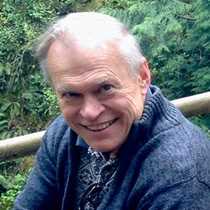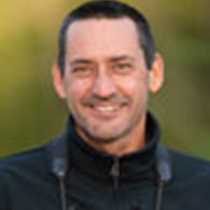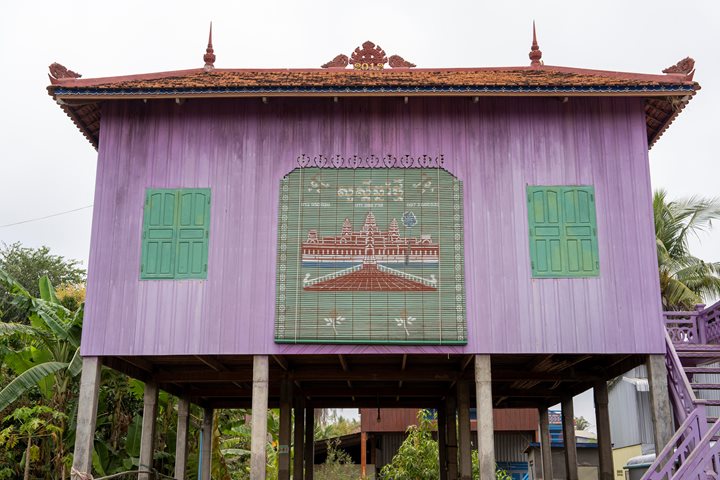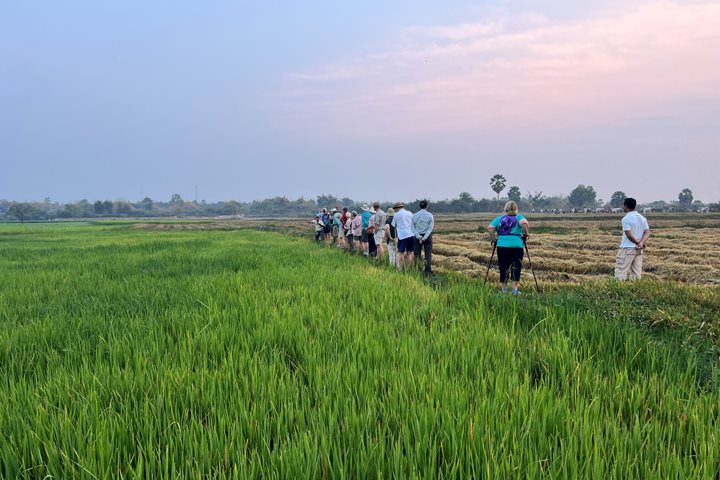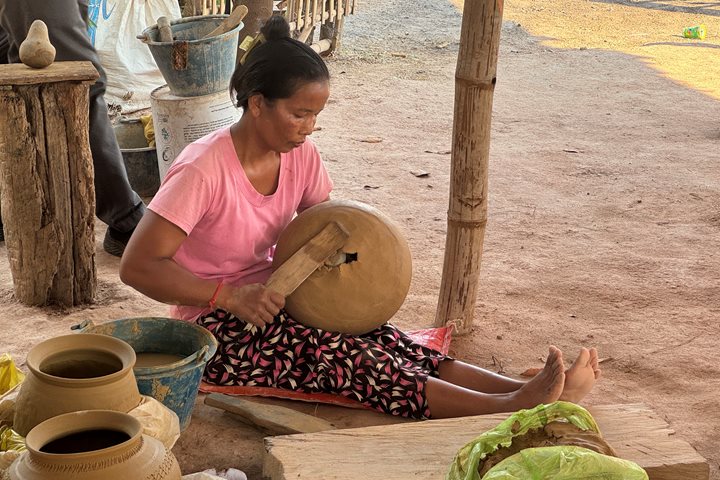Today, we disembarked Jahan and climbed up to the lovely
local temple at the village of Angkor Ban. At the front entrance was a cow endowed
with an extra leg with her calf. The pathway through the temple led us past
giant sculptures of fruits and vegetables on one side while the other had
religious figures riding on the 12 Zodiac animals of the Cambodian calendar – all
wonderfully colorful. Angkor Ban was a beautiful little village with more than 300
families living in stilt houses, some of which were older than two centuries.
As we walked through the village, we were able to interact with the villagers
and learn more about their lifestyles. We were very lucky and happened upon a
charming engagement party, where we were warmly welcomed and given an
explanation of the ceremony. We also had the opportunity to visit a traditional
home and see how the locals lived. The slatted bamboo floors provided much
needed ventilation. We then returned to Jahan with lots of great photos
and great memories.
Back on Jahan, we awaited two monks to arrive to do a
blessing ceremony for guests and Jahan staff in the lounge area. The two
monks sat behind a table filled with flowers and fruit. The blessing was
recited in both Pali and Khmer, while water was sprinkled on the respectful
crew seated on the floor with heads bowed and hands pressed together. Donations
were collected for the monks and there were questions. It is customary to show respect
to the monks by touching the ground or moving the hands in prayer three times
to indicate the Buddha, Dharma (or Teachings) and the Sanga (or Monkhood).
We cast off and cruised towards Koh Oaknhatey. Before lunch,
Barry gave a presentation on the mighty Mekong and South China Sea as well as
those issues facing Southeast Asia including state relations with China and
regional challenges faced by climate change. Then after lunch, Mike Greenfelder
gave a class on photography techniques.
In the afternoon, we travelled by tuk tuk to a silk weaving
village on the island of Koh Oaknhatey to experience the production of silk
from the silkworm to making the silk thread and its weaving. The revival of
silk production in Cambodia owes a great deal to the late Mr. Morimoto of Japan,
who was able to restore the methods of traditional silk making in Cambodia.
While here we got to see birds, a porcupine and two hearty crocodiles.
We then took our tuk tuks to a Theravada Buddhist temple with
beautiful murals near Jahan. Barry showed people the mural which
inspired Sakyamuni to leave his palace and become a Buddha after seeing the
famous Four Sights for the first time – a dead man, a diseased man, a very old
man and a Holy Man. He then entered his palace for good and decided to search
for a way to end suffering for the people and become the Buddha or the
Enlightened One.
Back on deck, we enjoyed the sunset and prepared for our night
aboard Jahan.



